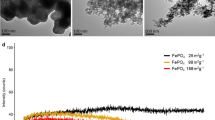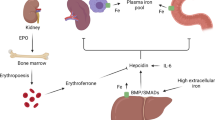Abstract
Objective: To calculate iron stores in man and their rates of changes in relation to iron requirements and dietary iron intake and bioavailability.
Method: Newly established relationships between iron absorption from whole diets and serum ferritin (SF) and between SF and iron stores allow calculations of amounts of stored iron under different conditions (diets, losses) at stationary states when absorption equals losses. Rate of growth of stores can also be calculated. All calculations are based on observations and require no model assumptions.
Results: Present calculations of iron stores agree with previously observed phlebotomy values. Differences in intake and bioavailability of dietary iron and in iron requirements had marked effects on amounts of stored iron. A wide range of diets was studied, from a hypothetical high-meat diet typical for early man to diets in developing countries. A new equation is given for the translation of SF into iron stores. Analyses of growth rate of stores under different conditions showed a fast growth from zero iron stores during the first year (reaching about 80% of final amounts) followed by a much slower rate for 2–3 y. A marked inertia was seen in rate of changes in iron stores that was more marked the closer stores were to their stationary states making it difficult to use SF to estimate short term changes in iron absorption in iron replete subjects.
Conclusions: Realistic Western-type diets with good bioavailability can cover iron requirements in most women and can restitute iron stores during lactation. The high prevalence of iron deficiency in menstruating Western women is thus mainly related to a further low bioavailability of iron in present diets. Present analyses also demonstrated an effective control of iron absorption preventing development of iron overload in otherwise healthy subjects even if the diet is fortified with iron and even if meat intake is high.
Sponsorship: The Swedish Medical Research Council (project B94-19X-04721-19A) and the Swedish Council for Forestry and Agriculture Research (50.0120/95 and 997/881, 113:3).
This is a preview of subscription content, access via your institution
Access options
Subscribe to this journal
Receive 12 print issues and online access
$259.00 per year
only $21.58 per issue
Buy this article
- Purchase on Springer Link
- Instant access to full article PDF
Prices may be subject to local taxes which are calculated during checkout
Similar content being viewed by others
Author information
Authors and Affiliations
Rights and permissions
About this article
Cite this article
Hallberg, L., Hulthén, L. & Garby, L. Iron stores in man in relation to diet and iron requirements. Eur J Clin Nutr 52, 623–631 (1998). https://doi.org/10.1038/sj.ejcn.1600623
Received:
Revised:
Accepted:
Published:
Issue Date:
DOI: https://doi.org/10.1038/sj.ejcn.1600623
Keywords
This article is cited by
-
Physiological requirements for iron in women of reproductive age assessed by the stable isotope tracer technique
Nutrition & Metabolism (2019)
-
Iron Therapy in Patients with Heart Failure and Iron Deficiency: Review of Iron Preparations for Practitioners
American Journal of Cardiovascular Drugs (2017)
-
The importance of bioavailability of dietary iron in relation to the expected effect from iron fortification
European Journal of Clinical Nutrition (2008)
-
Consequences of iron depletion on health in menstruating women
European Journal of Clinical Nutrition (2003)



